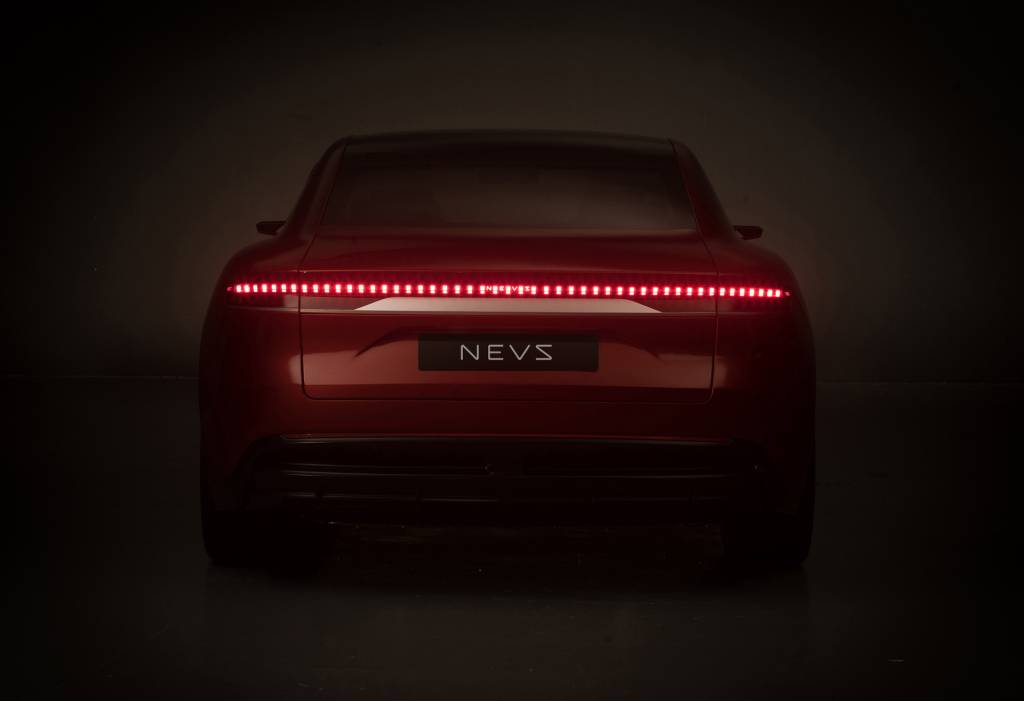An electric sedan prototype developed by failed Saab savior NEVS has surfaced in the wake of the company’s shutdown.
NEVS bought the remains of Saab after the Swedish automaker went bankrupt in 2011. It once planned to launch a series of four electric vehicles for China, all built on the Phoenix platform that was going to underpin the next-generation Saab 9-3, plus an electric version of the existing 9-3 using that model’s legacy General Motors platform. The latter, along with a model based on the old Saab 9-3X, was shown in 2017.
The car just revealed, a prototype called the Emily GT, came a bit later and hadn’t previously been discussed publicly. Development started in 2019 and was completed—to a prototype level—in only 10 months.
NEVS Emily GT prototype – Photo credit: Protean
NEVS started documenting that development process in 2020 for the benefit of parent company Evergrande, whose executive couldn’t travel to Sweden to see the car in person because of pandemic restrictions. This was done in concert with marketing company Plint, which has now released some of the content that was produced. First spotted by the Swedish edition of Auto Motor & Sport magazine, the materials provide a glimpse of the Saab-inspired EV that might have been.
The Emily GT wasn’t originally intended for production. It was built as a demonstrator for in-wheel electric motor technology from Protean, a British company acquired by NEVS in 2019. Protean launched production of in-wheel motors back in 2013, and China’s Dongfeng recently claimed the world’s first production passenger cars with them.
No specifications have been released by NEVS, but the Emily GT used four motors thought to produce 120 hp each, for 480 hp total. It was also reportedly designed for a battery pack as large as 175 kwh,

NEVS Emily GT prototype – Photo credit: Plint/Protean
Mass-produced in-wheel motors have been discussed for some time, thanks to the packaging advantages of moving a motor out to the wheel hub. But in-wheel motors also face issues like increased unsprung weight, which can affect ride quality and handling. The Lordstown Endurance pickup truck and solar-assisted Lightyear 0 sedan both used them, but production of both vehicles has stalled. That leaves Aptera, which plans to use them in its upcoming three-wheeled autocycle.
Among the materials released is a video featuring Koenigsegg CEO Christian von Koenigsegg testing an Emily GT. NEVS acquired a 20% stake in Swedish supercar builder Koenigsegg in 2019, and the two companies planned to form a joint venture that was never fully detailed.
Project development was led by Peter Dahl, who started his career at Saab in 1994 and joined NEVS after Saab’s bankruptcy. Former Saab designer Simon Padien was also involved in the project. He was part of the team that worked on the last Saab 9-5, which might explain why the Emily GT vaguely resembles the 9-5, featuring a similar boxy profile.
Development of the Emily GT halted in 2021 when Evergrande ran into financial trouble, running up debts of more than $300 billion, linked primarily to its real estate business in China. With funding drying up, NEVS was already seeking a buyer at that time. It announced earlier this month that it was shutting down, and the intellectual property rights for the Emily GT are rumored to be up for sale.
The days for the project to come back together may be numbered, or already past, as Polestar is planning to use the former Saab development center for Polestar 5 development, according to Automotive News. The 5 is due to be built on an 800-volt architecture, with two motors for a combined 884 hp. Will the ghost of Saab finally be laid to rest?
